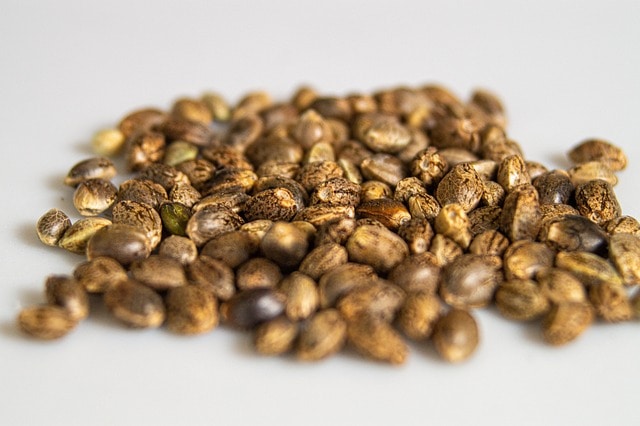Venturing into the world of indoor gardening doesn’t have to break the bank. By optimizing your grow room on a budget, you can still achieve lush plants and bountiful harvests without compromising on quality. From lighting and nutrient management to ventilation and pest control, there are plenty of cost-effective strategies to help you cultivate a thriving indoor garden without overspending.
Optimizing Your Grow Room on a Budget
Setting up a budget-friendly grow room starts with strategic planning. Determine the size of your grow space and the types of plants you wish to cultivate. By tailoring your setup to meet your specific needs, you can avoid unnecessary expenses and maximize your resources.
When it comes to selecting grow lights, consider energy-efficient options like LED or fluorescent bulbs. These alternatives consume less electricity, reducing long-term operating costs while still providing the necessary light spectrum for plant growth.
In addition to lighting, optimizing airflow and temperature control is essential for a successful indoor garden. Investing in oscillating fans and adjustable vents can help maintain proper air circulation, preventing mold and mildew growth without the need for expensive climate control systems.
Repurposing household items like plastic storage bins or PVC pipes can serve as budget-friendly solutions for organizing your grow room. Get creative with DIY shelving units or hanging plant racks to maximize space utilization without spending a fortune.
Moreover, conducting regular maintenance and inspections can help prevent costly issues down the line. Keep a close eye on plant health, monitor water and nutrient levels, and address any pest or disease concerns promptly to maintain a thriving indoor garden on a budget.
Economical Lighting Solutions for Maximum Yield
Lighting plays a crucial role in plant growth, making it a key consideration for budget-conscious growers. Opt for full-spectrum LED grow lights to provide the intensity and quality of light needed for healthy development from seedling to harvest.
Implementing a light schedule that mimics natural sunlight can help optimize plant growth while minimizing energy consumption. Consider using timers to automate your lighting cycles and ensure consistent light exposure for your plants.
To further enhance light distribution in your grow room, strategically place reflective surfaces such as Mylar sheets or white paint on walls to redirect light onto plant canopies. This simple yet effective technique can boost overall light efficiency without a hefty price tag.
Affordable Nutrient Management for Healthy Plants
Maintaining proper nutrient levels is essential for plant vitality, but it doesn’t have to be costly. Consider creating your own organic compost or nutrient-rich soil mixes using kitchen scraps, compost, or vermicompost to provide plants with essential nutrients at minimal expense.
Explore homemade nutrient solutions such as compost teas or DIY hydroponic nutrient blends to feed your plants without relying on store-bought fertilizers. These alternatives not only save money but also empower you to customize nutrient formulations based on your plants’ specific needs.
Cost-Effective Ventilation and Climate Control Tips
Proper ventilation is crucial for regulating temperature, humidity, and air quality in your grow room. Harness natural airflow by strategically placing intake and exhaust fans to create a steady cross breeze that helps prevent heat buildup and humidity issues.
Incorporate passive cooling techniques like shading or insulating your grow room to minimize heat stress on plants during hot weather. By optimizing your ventilation setup and climate control measures, you can maintain a stable and comfortable environment for your plants without splurging on expensive equipment.
Money-Saving Strategies for Pest and Disease Control
Preventing and managing pests and diseases is a critical aspect of indoor gardening that can be tackled affordably. Adopt proactive measures such as companion planting, introducing beneficial insects, or using homemade pest control remedies like neem oil or insecticidal soap to deter common pests naturally.
Regularly inspecting plants for signs of infestation and practicing good plant hygiene can help identify and address pest issues early on, reducing the need for costly treatments or replacements. By staying vigilant and implementing integrated pest management strategies, you can safeguard your plants while staying within your budget.
DIY Hacks to Enhance Your Grow Room Without Breaking the Bank
Embrace the spirit of creativity by incorporating DIY hacks and upcycled materials into your grow room setup. Repurpose old containers as plant pots, construct self-watering systems using recycled bottles, or craft trellises and support structures from bamboo or repurposed wood for a budget-friendly and sustainable garden.
Customize your grow room decor by painting plant pots, creating handmade plant labels, or designing unique plant stands using affordable materials like PVC pipes or wooden crates. Infuse your space with personality and flair while saving money on decorative elements.
Experiment with vertical gardening using repurposed shelves or hanging planters to maximize growing space in small areas. By thinking outside the box and exploring DIY solutions, you can elevate your grow room’s functionality and aesthetics without exceeding your budget.
Harvesting Savings Sustainably
In conclusion, navigating the realm of budget grow room essentials requires a careful balance of frugality and efficiency. By implementing the right tools and techniques, you can create an indoor oasis that nurtures your plants to their fullest potential without draining your wallet. Remember, a little creativity and resourcefulness can go a long way in achieving a successful and economical indoor garden.













